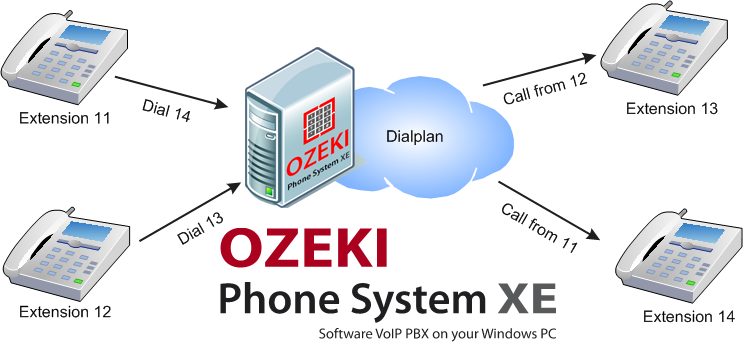What is Dial Plan?
In this article you can get to know some basic information of what a dial plan is, where it is used and what you can do in order to profit from the proper use of it. If you have a business where many phones or other devices are used for communication day by day, you need a dial plan to manage the calls. For getting to know how to make use of a dial plan, take a look at this page.
A dial plan is the automated system in the server that the admins can configure and that manages the internal and external calls, the call forwarding, call hold, restrictions and all the other features that belong here. Dial plans can be extremely difficult to create in a terminal, but with Ozeki Phone System, configuring a dial plan can be done easily in a few minutes (Figure 1).

Dial plans are used in companies where a high number of phone lines are used simultaneously: in offices and call centers in particular. Dial plans help the calls to arrive to the proper extension, and used together with IVR (Interactive Voice Response), an advanced, high-quality and professional communication system can be created for professional businesses or services.
When configuring a dial plan, you can give these settings to the server:
- creating call groups: you can organise groups from your individual extensions with the help of Ozeki Phone System: on the graphical user interface there is a menu item where you can create groups and add extension numbers to each group. Groups are virtual elements in the system, so an extension number can belong to more than one group. It is useful to create call groups according to the divisions/departments/etc. of the enterprise (e.g. health division, sales department)
- call forwarding: you can set in the dial plan that dependently from the state of work (available, busy, online, offline, etc.) of an extension, what should the server do with the incoming call: e.g. if it is busy, forward the call to another extension, to another (exterior) phone number, or make it wait until the extension becomes available.
- restrictions: you can put restrictions in the management: you can restrict the extensions to call each other or just some extensions (for example if you want your employees to work instead of chitchatting with each other, keeping the lines busy all day long) or you can restrict some (interior or exterior) numbers to be connected. You can also configure that some numbers can be forwarded only to some extensions and nowhere else. and there are other interesting features that you can have if you download the Ozeki Phone System and install it
With using Ozeki Phone System, these settings can be done in a few seconds per device, saving time for the admin and tons of headache for the employees.
The configuration of your dial plan is quite easy with your Ozeki Phone System graphical user interface: you just need to choose the proper menu items and add or remove the extension number to the lists.
The Ozeki Phone System is ready to be used in the time you have downloaded the software. After the few minute work of connecting the extensions, you can configure your dial plan according to your needs and aims. Having done this, your professional communication system is set and ready to manage your important calls.
For getting to know more about the call management that Ozeki Phone System provides you, read through some of our pages:
